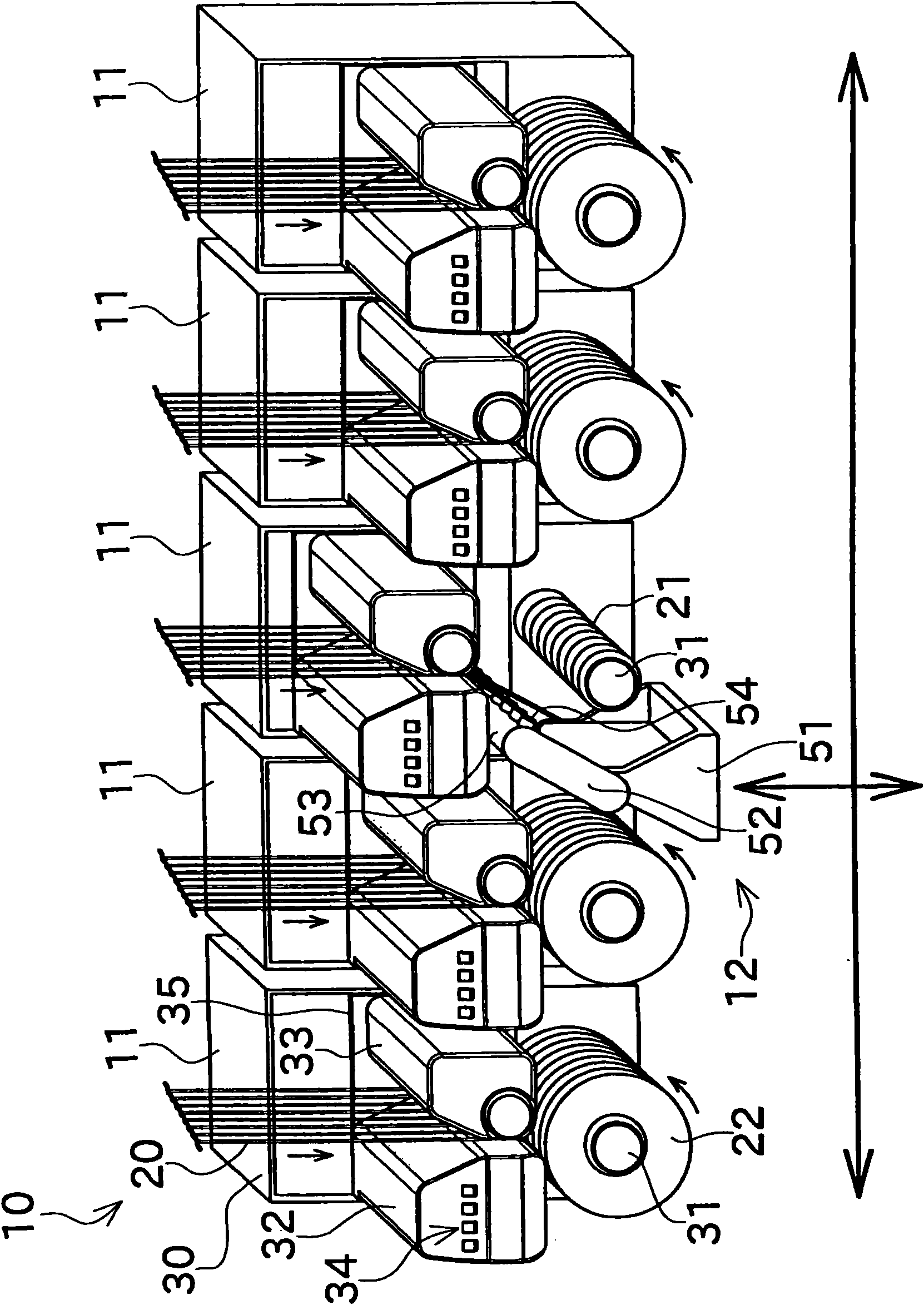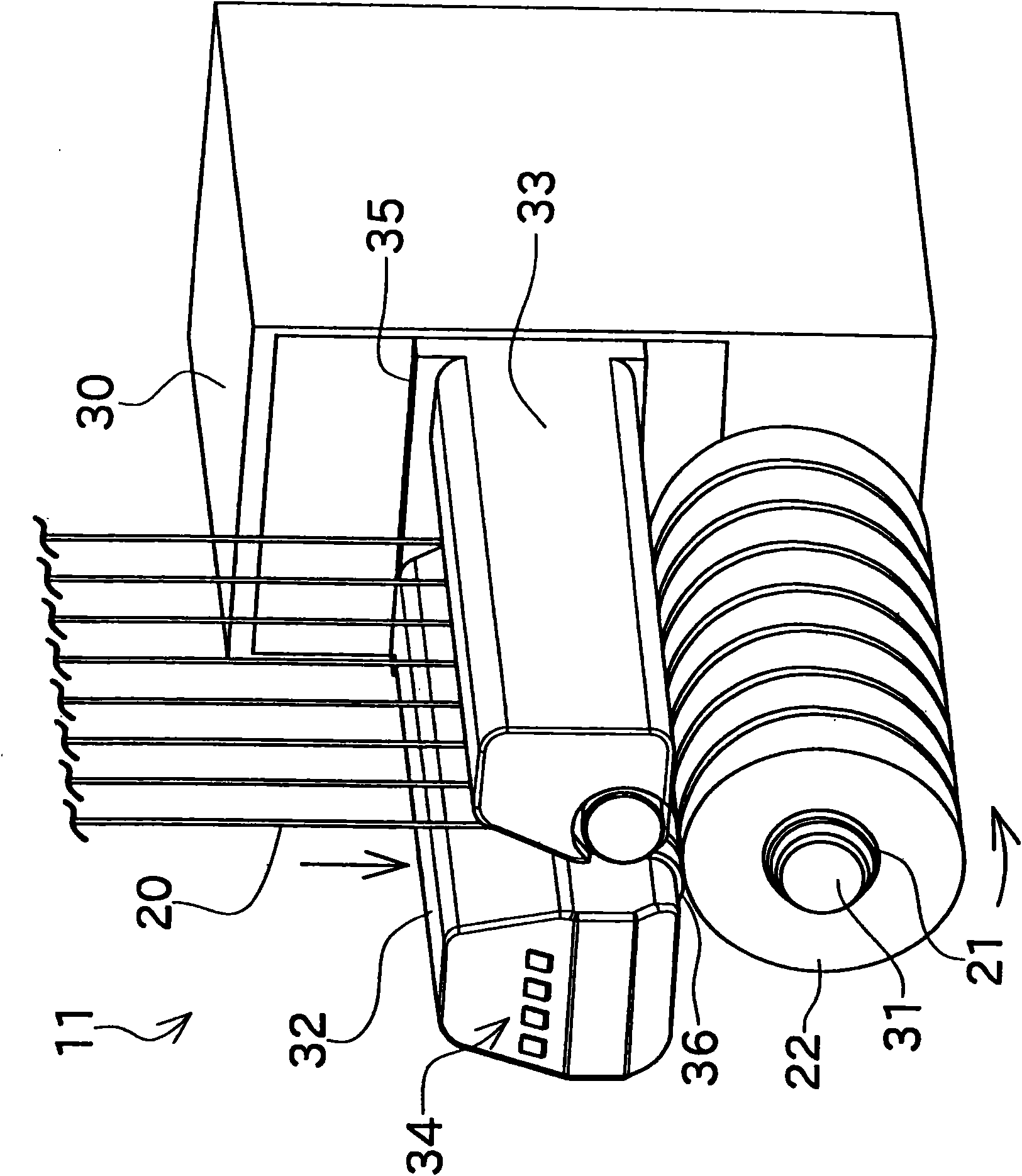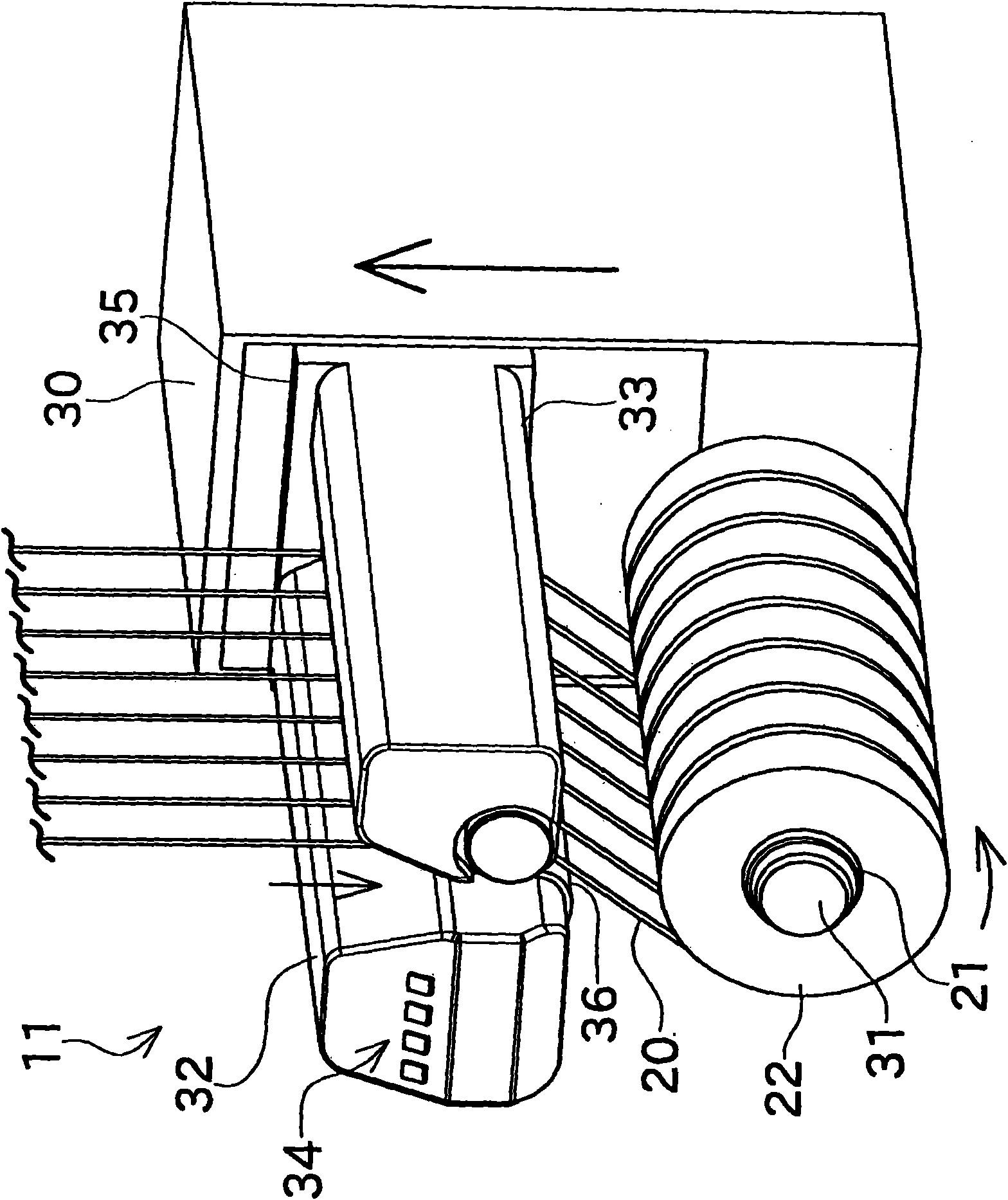Yarn winder
A yarn winding machine, yarn technology, applied in the direction of thin material handling, delivery of filamentous materials, transportation and packaging, etc., can solve the problems of reducing manufacturing costs
- Summary
- Abstract
- Description
- Claims
- Application Information
AI Technical Summary
Problems solved by technology
Method used
Image
Examples
Embodiment Construction
[0027] Preferred embodiments of the present invention will be described below with reference to the drawings. figure 1 It is a perspective view showing the appearance of a winder according to an embodiment of the present invention. figure 2 It is a perspective view showing the state of the winding unit during the winding operation.
[0028] Such as figure 1 As shown, the winder (yarn winding machine) 10 of this embodiment has a plurality of winding units 11, a switching device 12, and a control unit not shown. The winding unit 11 is a unit for winding an elastic yarn 20 such as spandex fiber around a winding tube 21 to form a package 22 having a predetermined length. In this embodiment, a polyurethane yarn is used as the elastic yarn 20 . The switching device 12 is a device for replacing the winding tube 21 without stopping the supply of the elastic yarn 20 from the upstream when the package 22 becomes a fully wound state (predetermined length). Structure. The control un...
PUM
 Login to View More
Login to View More Abstract
Description
Claims
Application Information
 Login to View More
Login to View More - R&D
- Intellectual Property
- Life Sciences
- Materials
- Tech Scout
- Unparalleled Data Quality
- Higher Quality Content
- 60% Fewer Hallucinations
Browse by: Latest US Patents, China's latest patents, Technical Efficacy Thesaurus, Application Domain, Technology Topic, Popular Technical Reports.
© 2025 PatSnap. All rights reserved.Legal|Privacy policy|Modern Slavery Act Transparency Statement|Sitemap|About US| Contact US: help@patsnap.com



